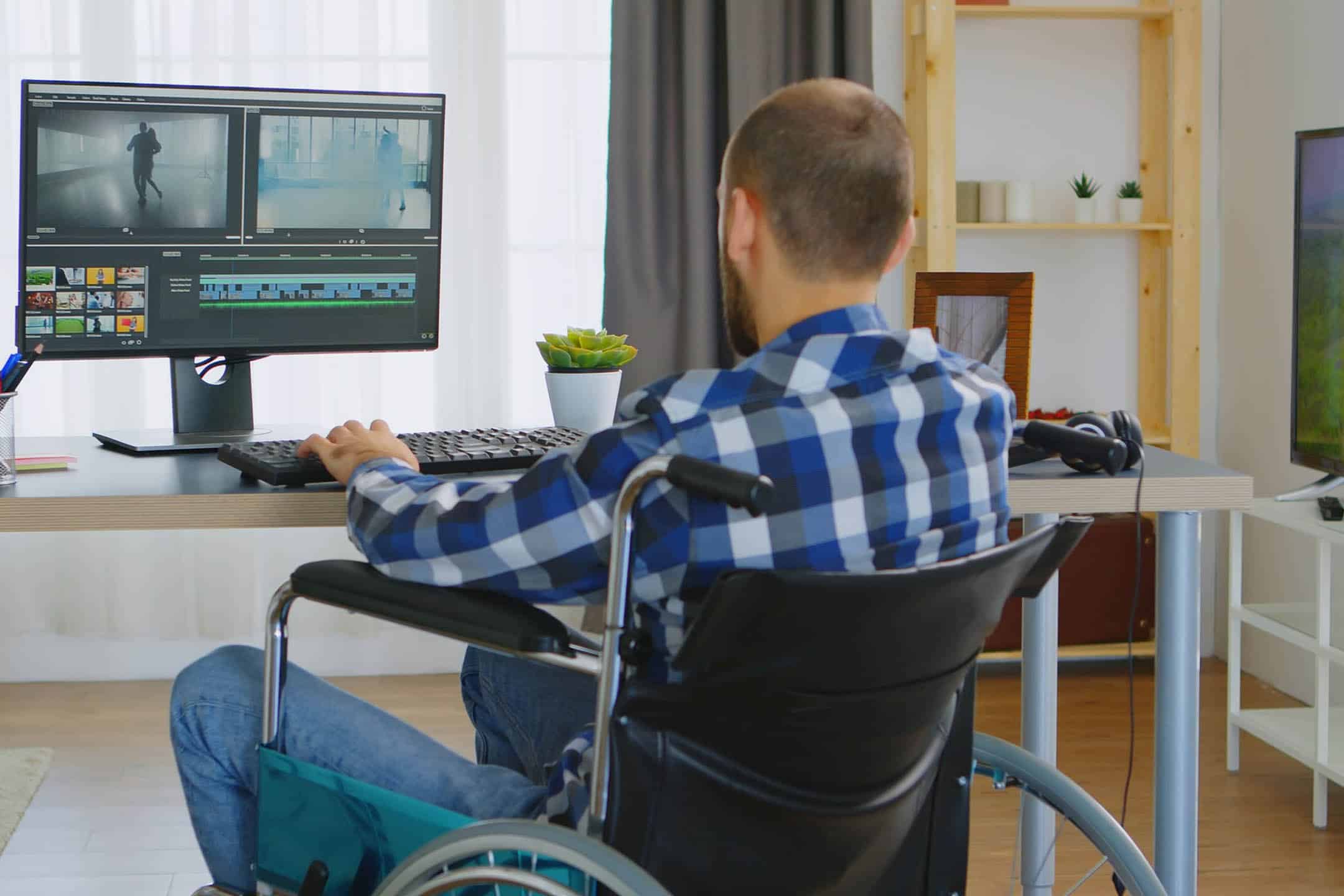Multimedia accessibility is no longer optional in today’s digital world. As more businesses, educational institutions, and public organizations rely on audio and video content to communicate, ensuring everyone can access and effectively utilize that content has become critical. Multimedia accessibility plays a central role in web accessibility and digital accessibility, ensuring that people with disabilities can engage fully with information, entertainment, and services online.
Legal frameworks such as the Web Content Accessibility Guidelines (WCAG) and the UK Equality Act 2010 establish clear obligations for accessible multimedia. Beyond compliance, accessible multimedia offers powerful business advantages, including expanding your market reach, enhancing brand reputation, and improving overall user experience. Making multimedia content inclusive from the start ensures it is usable, enjoyable, and effective for all audiences.
Meeting Global Legal Requirements
Worldwide, key accessibility standards set clear expectations for multimedia accessibility. These include:
- WCAG
- Americans with Disabilities Act (ADA, US)
- Section 508 (US)
- European Accessibility Act (EAA)
- UK Public Sector Bodies Accessibility Regulations,
- Accessible Canada Act (ACA)
- Accessibility for Ontarians with Disabilities Act (AODA)
- Australia’s Disability Discrimination Act (DDA)
These directives require public and private organizations to make digital content accessible to people with disabilities or face legal, financial, and reputational risks.
While web accessibility and digital accessibility focus broadly on platform and interface design, multimedia accessibility addresses the specific needs of audio and video content. This includes providing captions, transcripts, audio descriptions, and accessible media players to ensure all users can access and understand multimedia materials. Organizations must account for both web and multimedia requirements to achieve full compliance and meet the needs of diverse audiences.
Why Accessible Multimedia Is Good for Business
Beyond compliance, creating accessible audio and video content offers businesses a strategic advantage. By embracing accessibility, organizations can connect with wider audiences and improve user satisfaction, boosting long-term engagement. The following benefits highlight why making multimedia inclusive is not only the right thing to do, but also a smart business decision.
Expanding Your Market Reach
Accessible multimedia helps organizations reach millions of additional users who might otherwise be excluded, including people with visual, auditory, cognitive, or motor disabilities. By adopting multimedia accessibility practices, businesses open their doors to a broader audience, strengthening brand reputation and demonstrating a commitment to inclusion. Inclusive content also helps international audiences, older adults, and users in low-bandwidth environments, further expanding your market reach.
Enhancing User Experience
Accessibility improves the experience of every user, not just those with disabilities. Captions help viewers in noisy environments, transcripts support content skimming, and well-designed player controls improve usability on all devices. By focusing on multimedia accessibility, organizations create content that is clearer, more engaging, and easier to navigate, increasing user satisfaction and long-term engagement.
Core Principles of Accessible Multimedia
Accessible multimedia is built on the WCAG’s four foundational principles: Perceivable, Operable, Understandable, and Robust (POUR). Inclusive design should be integrated from the start, rather than added as a last-minute fix.
Perceivable, Operable, Understandable, Robust (POUR)
Perceivable: Content must include features such as accurate captions for spoken dialogue, transcripts for multimedia, and audio descriptions for key visual elements. These adaptations ensure that users who are deaf, hard of hearing, blind, or have low vision can perceive and understand the material without relying solely on sight or sound.
Operable: Media controls like play, pause, volume, and caption toggles must be accessible through a keyboard and assistive technologies. Interfaces should avoid requiring precise mouse movements or gestures, ensuring users with mobility impairments can operate them efficiently.
Understandable: Playback interfaces should be consistent, clearly labeled, and easy to use. Instructions for enabling captions or audio descriptions should be simple and visible, and content should avoid abrupt volume changes or unclear interactions that could disrupt user comprehension.
Robust: Multimedia players and their content must be built using accessible technologies that support a wide range of assistive tools, including screen readers and keyboard navigation. Ensuring compatibility across browsers, devices, and platforms helps maintain reliable access.
Making Video Content Accessible
Captions and Subtitles
Captions and subtitles are crucial for making video content accessible. Real-time captions provide live text during broadcasts or events. Closed captions can be turned on or off by the viewer, while open captions are permanently embedded in the video. Captions not only serve deaf or hard-of-hearing users but also benefit people watching in sound-off environments.
Audio Descriptions
Audio descriptions provide spoken explanations of important visual details, making videos accessible to blind or low-vision users. This may include describing actions, scene changes, or on-screen text. Including audio descriptions ensures all users understand the full context of your video content.
Providing Full Transcripts
Full transcripts provide a complete text version of spoken dialogue, key sound effects, and visual details when audio descriptions are unavailable. They help deaf and hard-of-hearing users, as well as those who prefer reading, access content more easily. Transcripts also aid users in low-bandwidth settings and enhance searchability and overall comprehension.
Accessible Player Controls
Accessible media players must support keyboard navigation and offer adjustable settings like playback speed or volume control. These features allow users with motor disabilities or assistive technology to interact with video content without barriers.

Making Audio Content Accessible
Providing Full Transcripts
Podcasts, webinars, and other audio files must offer full transcripts to be accessible. Transcripts provide a text alternative, allowing deaf or hard-of-hearing users and those who prefer reading to engage with the content. They also improve searchability and SEO.
Speaker Identification and Descriptive Intros
Identifying speakers and providing descriptive introductions helps listeners follow conversations, especially in multi-speaker formats. This is critical for users with cognitive disabilities and improves the listening experience for all audiences.
Tools and Platforms That Support Accessibility
YouTube and Vimeo Built-In Accessibility Features
YouTube and Vimeo offer features such as auto-captioning, manual caption editing, and accessible player controls. While auto-captioning provides a useful starting point, it can produce errors. To meet full accessibility standards, content creators should create or thoroughly edit captions for accuracy and include audio descriptions when visual details are essential.
Zoom and Virtual Meeting Platforms
Zoom and similar virtual meeting platforms include features such as live captioning, downloadable transcripts, and keyboard navigation support. Enabling these options ensures that meetings and webinars are accessible to all in real time. Hosts should also provide guidance to participants on how to access these features and offer materials in accessible formats afterward.
AI vs Human Captioning
AI-generated captions offer speed and convenience, but they often fall short on accuracy, especially for specialized vocabulary or multiple speakers. Human captioning services provide a higher-quality result, ensuring that captions are precise and contextually correct. Many organizations choose a hybrid approach, using AI for efficiency and human review for accuracy.
Accessibility Plugins and CMS Integrations
Content management systems such as WordPress and Drupal offer accessibility plugins to support compliance efforts. These tools can help automate checks for alt text, color contrast, and heading structures, integrating accessibility into publishing workflows. While they can provide useful prompts and validations, plugins are not a complete solution and often fail to address deeper accessibility barriers, such as missing audio descriptions or poor keyboard navigation. To understand the limitations of these tools and why they shouldn’t be relied on alone, watch this video.
Testing and Auditing Multimedia Accessibility
Manual and Automated Testing
WAVE, Axe, and other related tools can scan for accessibility issues, but manual testing helps to catch nuances that automation misses. For example, manual checks ensure captions are meaningful, audio descriptions provide the necessary context, and player controls work smoothly with keyboards and assistive devices.
User Testing with People with Disabilities
Involving users with disabilities in testing provides valuable real-world insights into the effectiveness of your accessibility efforts. Their feedback highlights usability challenges and ensures that content meets diverse needs, supporting continuous improvement efforts.
Build Content Everyone Can Access
Creating accessible multimedia is not a one-time task but an ongoing practice. As technologies, standards, and user needs evolve, organizations must commit to regular reviews, updates, and improvements. Accessibility offers a competitive advantage that expands market reach, improves user experience, and strengthens brand reputation.
If you are looking to make your multimedia content more accessible, explore GrackleDocs’ tools and solutions. We help businesses audit and improve digital accessibility across platforms, ensuring your content meets compliance standards and serves all audiences effectively.
